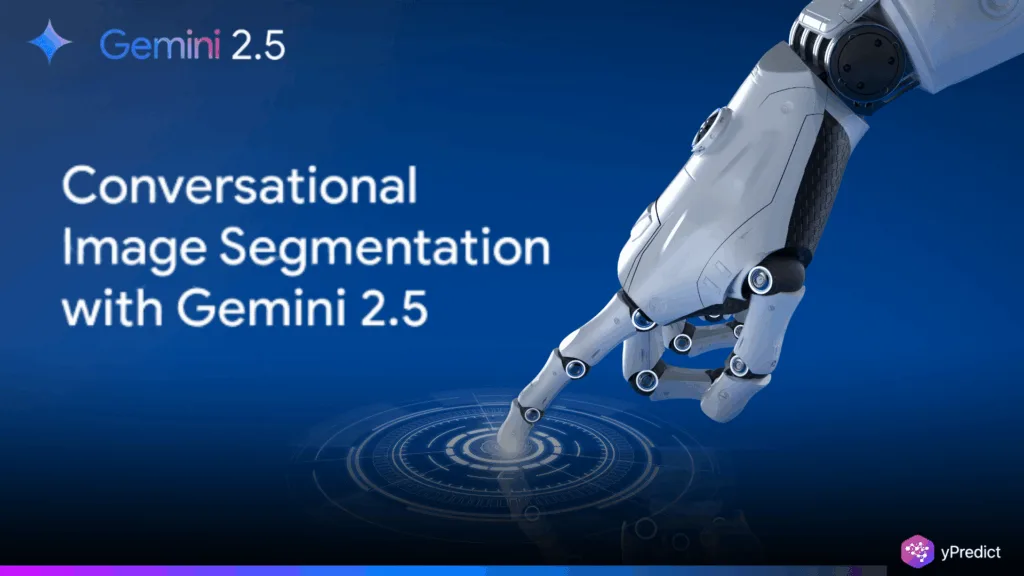
Google’s Gemini 2.5 advances AI vision with a breakthrough in conversational image segmentation. This new feature allows AI to identify the objects in an image. Furthermore, relationships, circumstances, and even abstract concepts like disorder or damage. Gemini processes descriptive phrases and interprets context with visual intelligence. Thus, this change creates strong use cases in insurance, safety, and the media.
What Makes Gemini Smarter With Image Queries?
Gemini 2.5 transforms how machines interact with images. Its fundamental component is an improved visual intelligence that goes beyond simple object location. Additionally, it can now understand advanced queries like “the tallest tree in the field.” This introduces a conversational approach to an area that has historically been controlled by predefined classes or manual labeling.
Developers and artists now have access to a potent tool that reacts organically to spoken or typed commands. Gemini differs from earlier AI vision solutions in that it innovates not only in precision but also in context. Thus, conditional requests, relationships, and descriptive phrases are now possible.
How Conversational Image Segmentation Works
Understanding relational cues is at the core of conversational image segmentation. You can now ask questions like “the child standing behind the bench” or “the person holding the umbrella.” Gemini uses placement and context to interpret these, providing accurate image masks for the user’s request.
Reasoning With Logic and Language
Gemini also supports the development of conditional logic in visual intelligence. Visual information and logical negation are combined in a prompt such as “Highlight workers who are not wearing safety gloves.” Similarly, it recognizes filters such as “green bags without logos” and “vegetarian food.” This makes it a useful tool in situations where rule-based image inspection is required.
Abstract Concepts and In-Image Text
Among its most impressive qualities is its ability to understand abstract concepts. You can now ask it to recognize “an opportunity,” “damage,” or “a mess.” It uses its understanding of the world to identify subtle patterns. Furthermore, Gemini reads text contained in images, including labels, signs, and menus, using its OCR capabilities.
Will Developers Build Better With Visual Understanding?
Gemini helps developers deploy AI more easily. Building AI vision systems in the past required expensive infrastructure, specialized training, and separate models. Anyone can now incorporate conversational image segmentation into their apps using a single API. Consequently, entry barriers are lowered and production is accelerated.
Its versatility and ease of use are what make it developer-friendly. It meets the visual requirements of the industry by deciphering natural language. Therefore, developers can use simple English commands to optimize their apps for tasks like safety gear monitoring.
We can anticipate increased reasoning, more languages supported, and deeper visual intelligence as Gemini develops. Additionally, this will help industries like agriculture and healthcare, where visual judgments rely on description, context, and detail.
Conversational Image Segmentation Will Transform Visual Technology
Conversational image segmentation is transforming how we interact with images. Its potential extends across industries, from smart factory compliance to easy media editing. Furthermore, without a complex backend, developers can now more quickly and easily create advanced AI vision tools. Therefore, visual intelligence with Gemini 2.5 is about genuinely understanding rather than just seeing.






